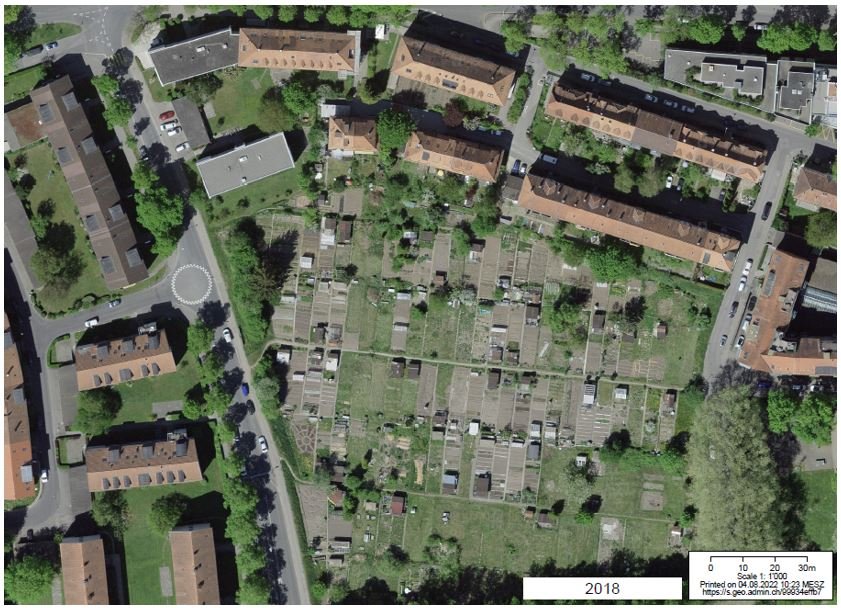From allotment gardens to affordable housing
The Huebergass project is located on publicly-owned land, which had always performed an agricultural function despite being located in one of Bern’s residential neighbourhoods. Since the Middle Ages, the land was connected to the Holligen Castle and cultivated for crops. More recently, since the 1950s, the land was occupied by allotment gardens which developed after the surrounding neighbourhood experienced a building boom. Due to the densification of the land, the allotment gardens have now disappeared. Today, the land is used for non-profit cooperative housing and a new public park for the neighbourhood.
The land being in ownership of the city of Bern, the plot provided an ideal location for the city to take the lead in developing inner-city housing– as was demanded by several political parties given the city’s growing population and the resulting difficulty of finding appropriate and affordable housing within city boundaries. Yet a change of the zoning plan was necessary to allow for housing development. In 2007, the city initiated a planning procedure to draft a detailed land-use plan (‘Überbauungsordnung’) for the plot. This planning instrument not only allows for deviating from the general zoning plan (including restrictions on built and use density) but also for integrating relatively specific and detailed planning regulations for one or several plots. It is therefore a preferred instrument for Swiss municipalities to enable and control densification projects.
According to cantonal planning law (‘Baugesetz Kanton Bern’), a detailed land-use plan proposal needs to be preceded by a public participation process and approved by the voting majority through a municipal referendum. Given the controversial decision to replace the existing allotment gardens with new housing, approval of the new land-use plan was far from straightforward. The city, therefore, was required to “sell” the densification to the public by including several policy goals in the project, including housing affordability, social mixing, and improved access to public green space. The land-use plan was finally approved, and the allotment gardens were closed. The housing, developed by a non-profit cooperative developer based on a ground-lease contract (‘Baurechtsvertrag’), was completed in 2021 and contains 103 affordable housing units.
Want to know more?
Verheij, Jessica, Gerber, Jean-David and Stéphane Nahrath. 2024. “Commoning the compact city: The role of old and new commons in urban development.” Geoforum, 152(11).
Read the full article here
Change of land use of the Huebergass plot between 2009 to 2021. Source: Swisstopo (2022).



